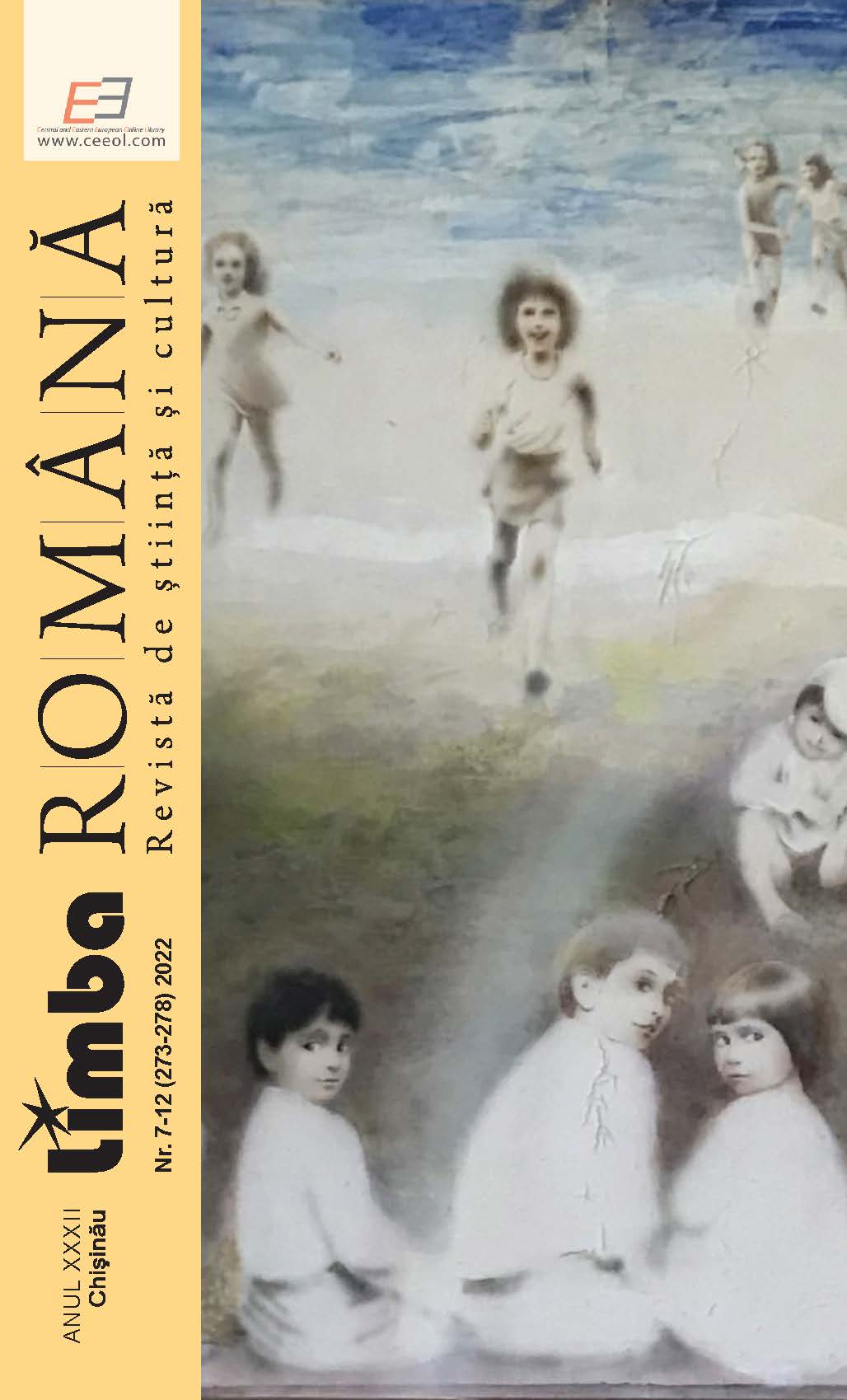
Dmytro Tchystiak (Ucraina)
Poems by Dmytro Tchystiak - "Regăsire / Recovery", "Se au clopotele toamnei / The bells of autumn", "Căderea serii / Dawn", "Livada sacră / The sacred orchard".
More...We kindly inform you that, as long as the subject affiliation of our 300.000+ articles is in progress, you might get unsufficient or no results on your third level or second level search. In this case, please broaden your search criteria.

Poems by Dmytro Tchystiak - "Regăsire / Recovery", "Se au clopotele toamnei / The bells of autumn", "Căderea serii / Dawn", "Livada sacră / The sacred orchard".
More...
The article explores the limit phenomenon in terms of its participation in the process of the formation and transformation of meanings. The functioning of the concept is considered on the basis of the dramatic poem Cassandra by Lesya Ukrainka. Since the work is based on myth and itself imitates the structure of a myth, thus revealing a noticeable feature of European culture at the turn of the 19th–20th centuries regarding the fundamental developments of mytho-critical schools, the border phenomenon is illuminated through the prism of two aspects – content and form. The first aspect focuses on existential meanings; it is about the formation or transformation of meanings at the moment a person reaches his limit or the limit of the world (first of all, a meeting with fate or death). The second aspect concerns the phenomenon of myth and the manifestation-formation of new meanings at the moment of interaction between the myth matrix and its literary interpretation. The focus of the analysis on the threshold phenomena of Cassandra demonstrates the playwright’s skill in working with the ancient myth. Lesya Ukrainka preserves the outline of the myth and the literary image of the Trojan prophetess, but also inscribes new meanings that are relevant to her time, thus universalizing them, and revives myth itself as a universal form of preserving and transporting meanings.
More...
The article is devoted to the analysis of the thinking model in the story “Naimyсhka”. It is emphasized on the strong Ukrainian national features of this model and their representation in the ideological and thematic spectrum, the system of images, numerous Ukrainianisms in the Russian language of the work, the description of folk customs, traditions, rites, travel notes introduced into the text. Each factor is analyzed in this paper. It is highlighted the Ukrainian perception of life by the heroes of the story, their expressed national mentality.
More...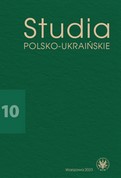
In memoriam: Dmytro Pavlychko (28 Sep 1929 – 29 Jan 2023)
More...
In memoriam: Dmytro Pawłyczko (28 IX 1929–29 I 2023)
More...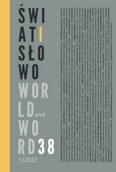
W artykule przeanalizowano tekst petersburski przez pryzmat pogranicza, będącego miejscem zachodzenia międzynarodowych relacji literackich. W tekście omówiono wkład E. Grebinki, utwory którego przedstawiają pogranicze etnokulturowe, w proces tworzenia wspólnej dla całego imperium, specyficznie oznaczonej intertekstualności ukraińsko-rosyjskiej. Ten temat wymaga podejścia naukowego opartego na transferze kulturowym, krążeniu i ruchu powszechnych wątków, na podstawie którego powstają nowe podtypy tekstu petersburskiego. Omawiane szkice Grebinki są najbardziej reprezentatywne z punktu widzenia stosowania typowych tropów artystycznych, fragmentaryzacji gatunkowej oraz stosunków pomiędzy dyskursem stołecznym a prowincjonalnym. Przestrzeń artystyczna staje się modelem relacji nieprzestrzennych i przybiera charakter antropocentryczny. Prześledzono dynamikę jej ciągłych ruchów i przemieszczeń, zwrócono uwagę na spotkania subiekta z obcym oraz dokonano rewizji doświadczeń życiowych pod wpływem wstrząsu emocjonalnego w szerokiej amplitudzie wahań między akceptacją, idealizacją i odrazą do stolicy, podkreślaniem jej fantasmagoryczności, wyobcowania.
More...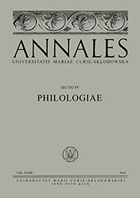
This article attempts to analyze the structure of the poem Коли тебе здолає тлум смертей written by famous Ukrainian dissident poet Vasyl Stus (1938–1985). The poem undoubtedly reflects the essential features of Stus’s poetic style of the 1970s as the poet had been working on the text for at least three years (1972–1975) before he was arrested for the first time. The characteristic features of the construction of the form and the semantics of the analyzed text enable the author of the article to argue that the structure of the poem demonstrates not only formal similarities or textual coincidences with other poetic texts of the Palimpsests collection (as well as his earlier poems), but also reveals a deep inner connection with Stus’s two critical essays (1970–1971) on Volodymyr Svidzinsky and Pavlo Tychyna, which undoubtedly indicates that the problems and issues raised in the poetic text are of significant importance for the poet. It is necessary to note that one of the central elements of Stus’s poetic world is the traditional Ukrainian language (in particular, a literary one), since the poet neglects the Soviet version of the Ukrainian language in the second half of the 20th century considering it Russified and “alien”.
More...
The article is about the structural specificity and features of the motivation of the author’s names of dishes in Mariia Matios’ novel Culinary Tricks. The study was based on the specificity of cognitive onomasiology, which enables the mechanisms of linguistic meaning of the mental lexicon of various components of consciousness to be identified. The article describes the structural features of author’s titles of dishes, single-component nomen, which are simple suffix units, and multi-component, which are structurally related to word combinations. Twelve typical models of multi-component titles are singled out and described. The motivational connections between the onomasiological structure of the author’s titles of dishes are analyzed, as well as the semantics and fragments of knowledge ac- tivated in the process of naming. It was found that ‘culinaryisms’ formally and meaningfully reflect the choice of motivators of the names: ingredients, taste characteristics, method of preparation, local distribution, etc. Metaphorical motivation is based on transferring the name based on the external similarity of objects (shape, color, size), as well as on evaluative and emotional associations. Parallel titles based on the choice of different motivators have been recorded.
More...
The article presents an analysis of the genre and stylistic peculiarities of Max Kidruk’s novels Until the Light Fades Away and Don’t Look Back and Stay Quiet. It was found that this repre- sentative of the young generation of literature skillfully transforms elements of different genres and combines them in his prose, making it difficult to unambiguously define the genre of his works. These transformations are a characteristic feature of his original style, which is still insufficiently explored. Lexical units such as proper nouns, linguistic expression (barbarisms, exoticisms, vulgarism, etc.) and terms are presented in Kidruk’s works. In addition, there are almost no descriptions in the researched texts, but images-symbols or even footnotes and appendices appear. Max Kidruk’s work can serve as a source for further research in linguistic stylistics as well as in literary studies.
More...
Attempts in Ukrainian culture to reflect on and rework the traumatic experience of the totalitarian past have been portrayed in recently published literary texts. The majority of these reflect the most topical issues of the present in light of the traumatic experience caused by repressive Soviet policies against the Ukrainian people during the 20th century. Today’s Russian-Ukrainian war, which began in the Donbas in 2014, is nothing less than a struggle against Russia’s imposed vision of identity and an attempt by Ukrainians to reclaim the proper image of historical memory. This issue is addressed on different levels by representatives of different generations. However, it is perhaps the most challenging for the youngest generation, as is clearly evidenced by Haska Szyjan’s novel Behind the Back, which is analyzed in the article. In this novel, we observe reality through the eyes of a young girl trying to regain her mental balance after directly experiencing the war.
More...
The author of the article researches one of the common images in the poetry of the Revolution of Dignity – the image of an angel. It repeatedly appears in poems by amateur writers. In addition to the sacred content, this image in poetry also has other features, as a result of which its multifaceted nature is revealed. The image of an angel formed in the minds of Ukrainians acquired other connotations and nuances during the Revolution of Dignity. This study singles out several images that are repeated in amateur poetry: the protective angel, the guardian angel, Archangel Mi- chael, and the angel of death. Another feature of this image is that in Maidan poetry, he is not always a heavenly creature, but often the embodiment of a dead protester. This article analyzes a number of poems by amateur poets and presents the specificities of each of them as confirmation that amateur Maidan poetry deserves a special place in Ukrainian literature.
More...
Literature as an art form has various original forms and means of self-expression, which determine the extent of its artistry. One of these means is artistic detail. Modern Ukrainian writer Iryna Savka uses micro-images (artistic detail) widely in her short stories, which, in fact, is a feature that distinguishes her works from others’ and makes them all the more recognizable. The relevance of this study lies in the fact that Savka’s works have not yet been researched thoroughly, in particular, regarding the use of artistic detail. Hence, this article can be considered an attempt to include Sawka’s novellas in the area of interest of contemporary scientific discourse. It is also worth noting how the key micro-image often appears in titles of Sawka’s works, with the entire plot then being built around it. This study specifically considers those micro-images that constitute a kind of visualization of how the text is perceived and most strongly affect the reader’s imagination.
More...
Review of: Babak, Galina a Dmitrijev, Aleksandr. Atlantida sovetskogo nacmodernizma: formal‘nyj metod v Ukraine (1920-je - načalo 1930-ch). Moskva: Novoje literaturnoje obozrenije, 2021. 779 stran. Naučnoje priloženije; vyp. CCXXIV. Naučnaja biblioteka. ISBN 978-5-4448-1730-8.
More...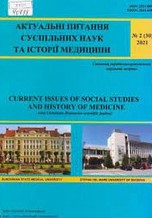
The purpose of the article is to consider the originality and analyze the plays of V. Kozhelyanko in the context of modern dramaturgy and special subgenre, what is called ―plays for reading. The novelty of the study is that the dramaturgical heritage of V. Kozhelyanko (in co-authorship with V. Serdyuk) became the object of a comparative study for the first time and has not yet been systematically introduced into the modern literary process in Ukraine. Research methods used in the article are subject to the comparative principle of presentation of the material, combine descriptive and functional-pragmatic methods of analysis. Conclusions. Architectural and genre-stylistic findings of V. Kozhelyanko in the dramatic genre of writing not only laid the foundation of his creative block, in particular the novel in the genre of alternative history and adventure postmodern and newmodern novels, but also formed a workshop of the latest creative tools used by other modern authors (for example, Neda Neshdana). The plays of V. Kozhelyanko are considered in the key of genre and style analysis. Having analyzed some aspects of dramatic texts (the image of the national hero, historical and political figures in the writer's parodic prose, historical and detective novels and the realization of the chronotope in them as a distinguishing genre marker, emphasis on the mental mistakes of the Ukrainian nation as the leitmotif of the creative intention of V. Kozhelyanko) from the point of view of structural, descriptive, receptive and comparative approaches of literary science, we have good reason to talk about the work of V. Kozhelyanko as an example of high-quality modern neomodernist work of the European level.
More...
The purpose of the article consists in the study of modern Ukrainian composer V. Antoniuk’s reading of T. Shevchenko's program poem “Testament” using the means of musical expressiveness inherent in his individual manner with the use of the arsenal of artistic and technical tools of choral writing. Research methodology comprises a cultural approach, structural-systemic, complex and musicological analysis with generalisation of the results. Scientific novelty. Valerii Antoniuk's choral writing has been explored for the first time through the prism of the thesaurus of musical symbols and the concept of neo-romanticism (symbolism) in the context of the Ukrainian musical tradition. Conclusions. The genre of this work has been determined as “choir fresco”. The authors have found that neo-romanticism is an important component in V. Antoniuk's artistic worldview and philosophical paradigm, so the influence of romanticism poetics can be traced in the work. The archetypal images of Ukrainian artistic culture embedded in the work are analysed, which are simultaneously identified with reality, but also remain certain generalising symbols of the musical thesaurus of the author's style. The mood of the lyrical hero of the work is represented – the narrator-protagonist with the entire spectrum of his feelings, philosophical perception of the depths of the life fullness, merging with the surrounding world, feeling a part of it. The personal feelings and moods of the Ukrainian composer of the beginning of the 21st century are outlined and characterised. V. Antoniuk's understanding of the artistic and aesthetic idea, time-space, height and power accentuation of traditional singing of his native Shevchenko region by birth and origin, conglomerated with the means of modern compositional technique, revealed a deep level of the artist's individual mentality, which vividly certifies the ontological genesis of his creative identity.
More...
The article was written in the vein of research into the Ukrainian national-linguistic image of the world. The nominative layers of the vocabulary for the designation of thebasic opposition ‘own-alien’ were considered – as one of the profiles of the concept of theRussian-Ukrainian war in the novel Dotsya. It was found that this profile in the text of thequasi-participant in the war Tamara Gorikha Zernya is constructed on the basis of an organiccombination of individual and authorial views and at the same time national worldview. Themain binary dichotomy ‘own-alien’ is expressed, in particular, in the extensive system of namesof a) stages of preparation for the Russian-Ukrainian war, b) its participants, c) locations of thelanguage map of Donetsk marked by the war.
More...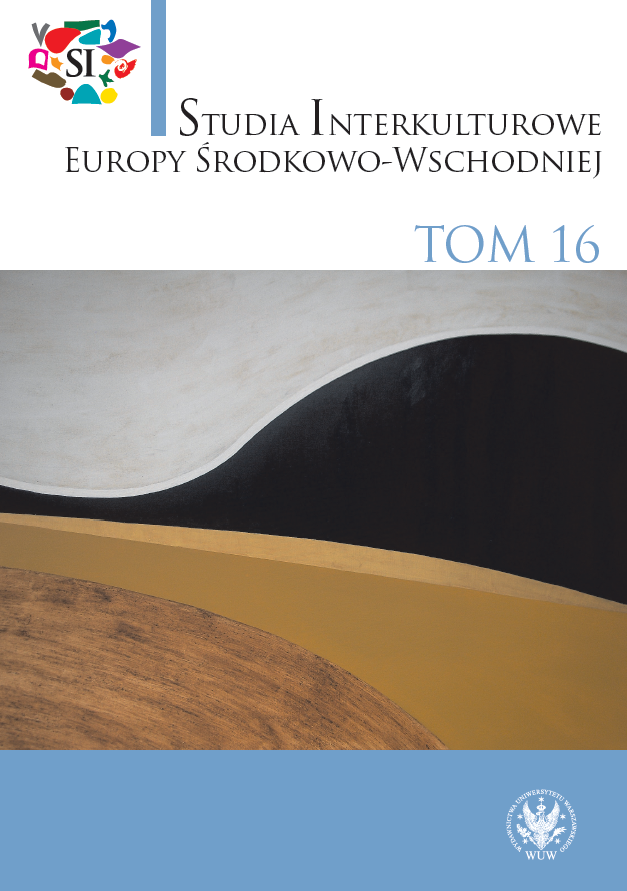
The article analyses Ukrainian prose works published after the Russian aggression against Ukraine on 24 February 2022. Generally, the newest Ukrainian prose gravitates more towards the non-fiction genre framework. It is represented by numerous anthologies, mainly with pieces by famous writers, literary critics, and public figures. The authors record personal experiences and reflect on the history of the Russian-Ukrainian confrontation in historical retrospect. Today, the non-fiction format is more popular because it allows essayists to talk about painful topics from a more moderate position and broadcast the situation of Ukrainians to the international community through the mobile genre of short journalistic prose. At the same time, the revaluation of values experienced currently by millions of Ukrainians is manifested in the tendency to cancel everything Russian, which affects the course of the literary process and the distribution of roles among its players, as well as causes the appearance of texts whose style is dominated by hatred of the enemy of the occupier.
More...
The translation of works from home writers and their publishing abroad is a crucial segment of the cultural policy in each country. Thus, the literary creation, as an important segment of each culture, reaches the foreign culture. A lot of countries in the world assign means for financial support of foreign publishers in order to spread out the creative works of home writers. The financing process is usually managed by the Ministry of culture or some special national institution, founded for that specific purpose. Macedonian program for support of foreign publishers for publishing works of Macedonian authors functions within Macedonian Ministry of culture. The process of financial support of the works of Ukrainian literature is under the guidance of the Ukrainian Book Institute with the program Translate Ukraine. Some of the most important characteristics of Translate Ukraine and the whole activity of the UBI are visibility, openness to public, marketing and willingness to inform. Macedonian Ministry in this regard is fully non-transparent.
More...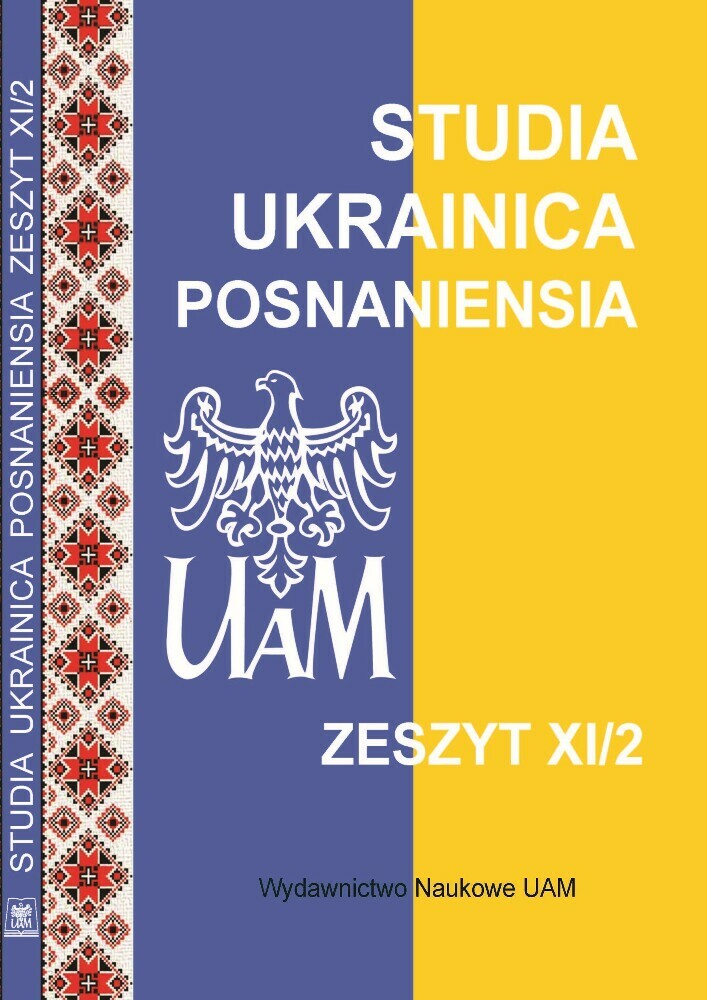
The works of Mykola Khvylovyi – one of the most recognizable writers of the 1920s – has many blank spots, which is why it is still the subject of scientific research in literary studies, political science and history. There is no doubt that the ideas of this Ukrainian writer significantly influenced not only the course of Ukrainian literary discussion but also the shape of contemporary Ukrainian literature. The aim of this article is to attempt to examine the phenomenon known as “khvylovism” and to prove that it is a phenomenon artificially created by the ideologists of the communist party in the 1920s. The author pays particular attention to the fact that “khvylovism” cannot be treated as a system of the writer’s political views but as a concept for the development of independent Ukrainian literature.
More...
The author analyzes Yevhenia Kononenko’s novel This Crazy Year (2023). Written in the form of a diary, it contains interesting reflections on the first year of full-scale Russian-Ukrainian war. The writer perfectly combines fiction and non-fiction discourses. Her style should be classified as autofiction, according to an analogy with the works of her favorite French novelist Annie Ernaux, which Kononenko published in her own translation into Ukrainian. In the novel This Crazy Year it is clearly illustrated how the imperial myth of neighbors gradually discredited the idea of community and brotherhood cultivated during the USSR period, especially in the context of the heroine’s private relations with her friends from Moscow. The portrayal of the narrator’s personal tragedy related to the illness and death of her daughter is marked by sincerity and confidentiality. As a new effort to interpret somebody’s own experience of the war, this novel is very important from the contemporary research point of view.
More...